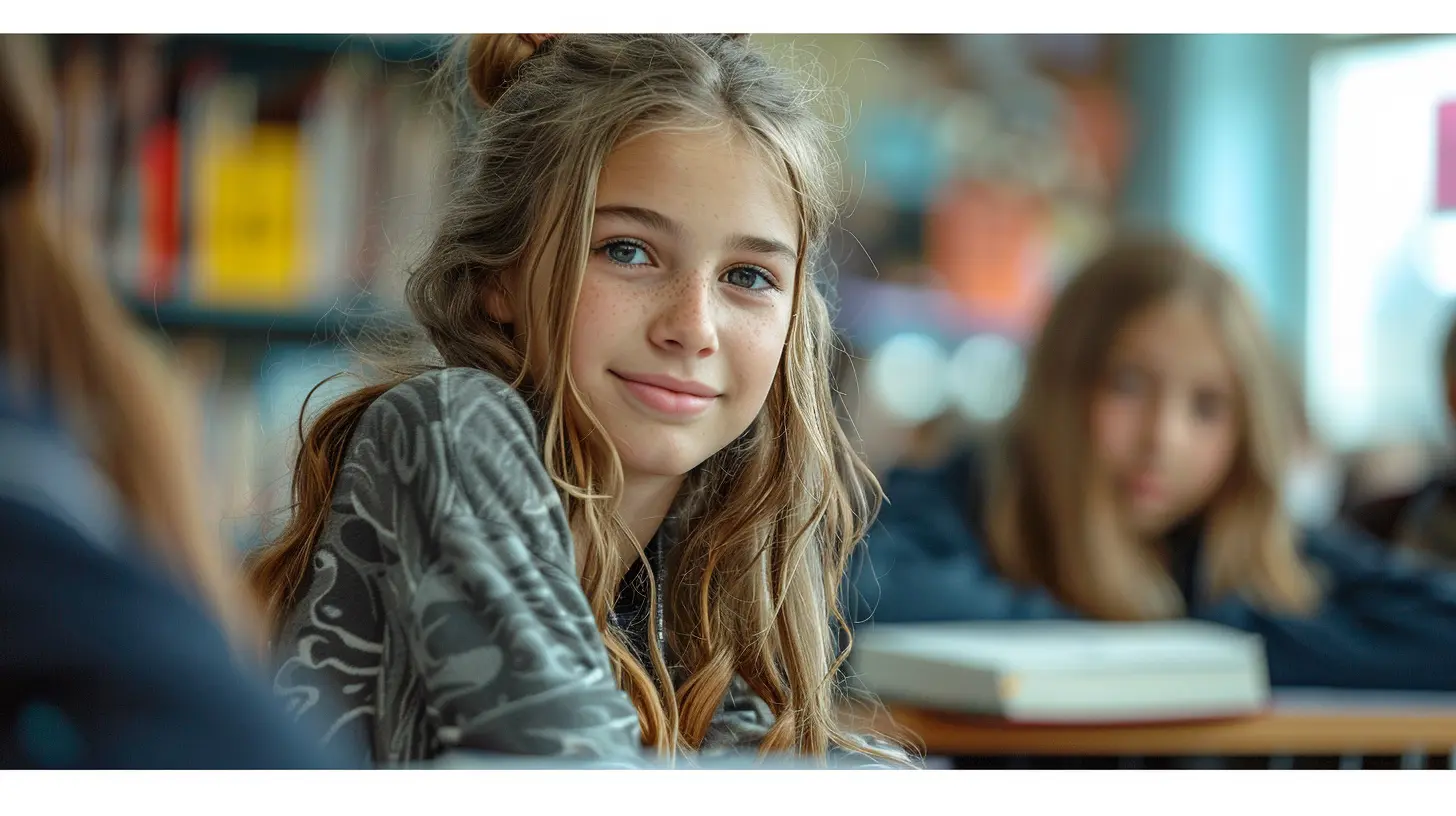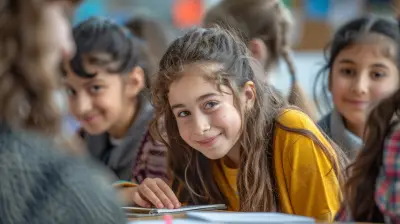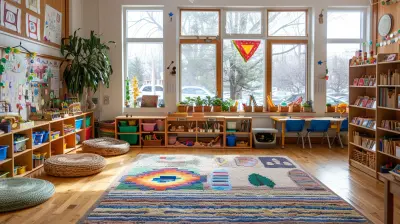14 March 2025
When it comes to education, one size definitely does not fit all. Every student has a different way of learning, and perhaps more importantly, a different set of interests and passions. As educators, it can be challenging to find an approach that not only engages students but also prepares them for real-world challenges. Enter Project-Based Learning (PBL). Now, if you sprinkle in some community involvement, you’ve got a recipe for success that’s hard to beat. So, how do we go about incorporating community involvement into PBL? Glad you asked. Let’s dive in!

What is Project-Based Learning?
Before we jump into the "how" let's make sure we're all on the same page about what Project-Based Learning is.Project-Based Learning is a teaching method where students gain knowledge and skills by working for an extended period to investigate and respond to a complex question, problem, or challenge. Instead of traditional rote memorization or lecture-based instruction, students engage in projects that allow them to apply what they've learned in practical and meaningful ways.
Think of it as learning by doing. Instead of telling a student how a car engine works, you’d have them build one. Or instead of teaching about local government from a textbook, you’d have them work with the city council to solve a real-world issue. Sounds fun, right?
But wait—there’s more! When you add community involvement into the mix, the learning becomes even more impactful.

Why Community Involvement Matters
Community involvement in education, particularly in PBL, brings a whole new level of depth to learning. It bridges the gap between the classroom and the real world. By involving local businesses, organizations, and community members, students get the chance to interact with the world outside their school walls. This not only makes learning more engaging but also more meaningful.Real-World Connections
One of the key benefits of incorporating community involvement is the real-world connections that students get to make. Let’s face it—students often sit in classrooms wondering, “When am I ever going to use this?” By working on community-based projects, they see firsthand how their lessons apply in real-world situations.For instance, instead of learning math through endless worksheets, students could partner with a local bakery to help calculate ingredient costs, measure quantities, and even predict profits. The math becomes something tangible, something they can see and touch, rather than just numbers on a page.
Expanding Horizons
When students work on projects within their community, they’re exposed to careers, people, and perspectives they might not otherwise encounter. This can spark new ideas, open doors to various career paths, and broaden their understanding of the world.Imagine students working with a local non-profit to design a marketing campaign. They not only learn about marketing but also about the social issues the non-profit is addressing. Now, they’re not just students—they’re young professionals making a difference in their community.
Building Soft Skills
Yes, academic skills like math, science, and writing are essential. But so are soft skills like communication, teamwork, problem-solving, and leadership. Community involvement in PBL provides the perfect platform to build these skills.When students collaborate with community members or local businesses, they have to communicate effectively, present their ideas, and work in teams. These are skills that are often overlooked in traditional education but are critical for success in the real world.

How to Incorporate Community Involvement into PBL
So, now that we’ve established why community involvement is important, let’s talk about how you can integrate it into Project-Based Learning. It doesn’t have to be complicated, but it does require some planning and creativity.1. Identify Community Partners
The first step in incorporating community involvement is to identify potential partners. These could be local businesses, non-profits, government organizations, or even individual community members with expertise in a particular field. The key here is to find people or organizations that are willing to collaborate with your students.Start by reaching out to your local chamber of commerce, local government offices, or community organizations. You might be surprised at how willing people are to get involved once they understand the educational impact.
2. Align Projects with Community Needs
To make the partnership beneficial for both students and the community, try to align the PBL projects with real community needs. This gives students a sense of purpose and makes the project more meaningful.For example, if your community is dealing with environmental issues, students could work on a project to create a recycling campaign or design a community garden. Not only are they learning valuable skills, but they’re also making a tangible difference in their community.
3. Make It Hands-On
The beauty of PBL is that it’s hands-on, and community involvement should be no different. Students should be actively engaging with the community, whether that means conducting interviews, gathering data, or participating in events.For instance, if students are working on a project about local history, they could interview long-time residents or work with a local museum to create an exhibit. Involving the community makes the project more dynamic and engaging, which in turn makes the learning experience richer.
4. Encourage Student Leadership
One of the key aspects of PBL is that it empowers students to take ownership of their learning. Community-based projects are a great way to encourage student leadership. Let students take the lead on organizing meetings with community partners, delegating tasks, and managing timelines.When students take ownership of their projects, they’re more invested in the outcome. Plus, they develop leadership skills that will serve them well in future endeavors.
5. Reflect and Share
Reflection is a crucial part of any PBL experience, especially when community involvement is part of the equation. After the project is complete, encourage students to reflect on what they learned, not just academically but also personally. What challenges did they face? How did they overcome them? What impact did their project have on the community?Sharing these reflections with the community partners is also important. It helps maintain positive relationships and showcases the impact of the collaboration. Consider hosting a presentation night where students can present their projects to the community. This not only gives students a sense of accomplishment but also reinforces the value of their work.

Examples of Community Involvement in PBL
Still not sure how this all works in practice? Let’s look at a few examples of successful community involvement in PBL.Example 1: The Community Garden Project
In one middle school, students partnered with a local non-profit to design and implement a community garden. The students worked with local experts to learn about sustainable gardening practices, designed the layout of the garden, and even secured donations from local businesses for supplies.Throughout the project, students not only learned about science and sustainability but also developed teamwork, problem-solving, and communication skills. And at the end of the project, they had a tangible result—a garden that would benefit the community for years to come.
Example 2: Local History Museum Collaboration
High school students in a history class teamed up with their local history museum to create a new exhibit focused on their town's role in the Civil Rights Movement. The students conducted interviews, researched historical documents, and worked closely with museum staff to design the exhibit.This project allowed students to engage deeply with their local history in a way that a textbook never could. It also gave them the opportunity to work with professionals in the field, further enhancing their learning experience.
Example 3: Small Business Solutions
In another example, students in a business class partnered with local small businesses to develop marketing strategies. The students worked in teams, met with business owners, and created marketing plans that the businesses could implement.Not only did students learn about marketing, but they also gained real-world experience working with clients. The business owners benefited from fresh ideas, and the students got a firsthand look at the challenges of running a small business.
Overcoming Challenges
Of course, incorporating community involvement into PBL isn’t without its challenges. Finding willing partners, managing logistics, and aligning schedules can be difficult. But with careful planning and clear communication, these challenges can be overcome.Start small—maybe one class partners with a local business for a short-term project. As you build relationships and gain experience, you can expand the scope of your community-based projects.
Also, be flexible. Things might not always go as planned, but that’s part of the learning process. Encourage students to adapt and problem-solve when challenges arise. After all, that’s what real-world learning is all about.
Conclusion
Incorporating community involvement into Project-Based Learning can transform the way students learn. It makes education more relevant, engaging, and impactful. By connecting students with their community, we not only enhance their academic learning but also equip them with the skills and experiences they’ll need to succeed in the real world.So, the next time you’re planning a PBL project, think about how you can involve the community. It might just be the missing piece that takes the project from good to great.









Dorothy Jones
Incorporating community involvement enriches project-based learning, fostering real-world connections and enhancing student engagement and responsibility.
April 2, 2025 at 11:30 AM